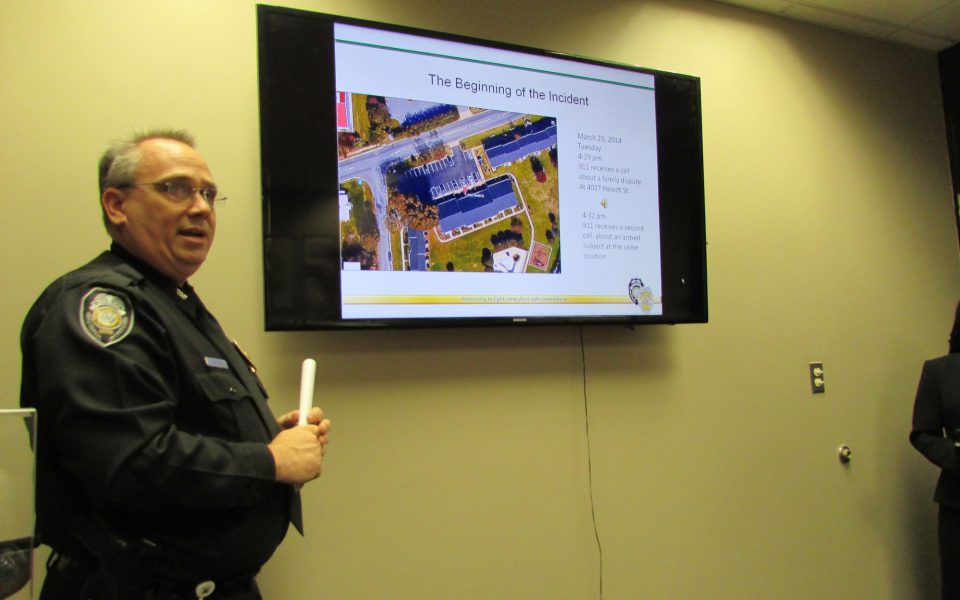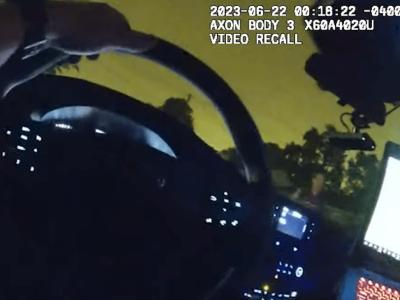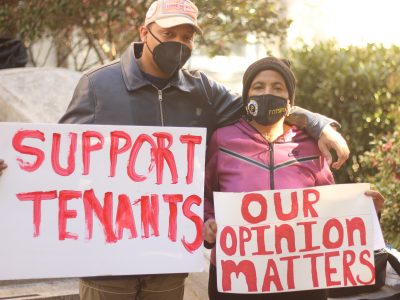After extensive community pressure and a call from the family to make the tape public, Greensboro City Council released body cam footage of the police shooting of Chieu Di Thi Vo last week. Council agreed to the move in order to maintain public trust, but some residents say the officer didn’t act appropriately.
The statement from the Southeast Asian Coalition couldn’t be much stronger.
“Watching the Vo video makes it clear that police have a permit to kill people who are neurodivergent/mentally ill under the guise of their training,” it begins. “We find this unacceptable.”
The Charlotte-based organization is one of more than 30 community organizations around the country that is “standing by the Vo family,” according to the statement.
It took two years for the fatal police shooting of Chieu Di Thi Vo to reverberate out from Greensboro. Mounting public pressure to consider police body camera footage a matter of public record and recent vocal calls from Vo’s family to privately view and then publicly release the footage led to its disclosure last week.
While some could argue that the release is a step towards transparency for the city, as the Southeast Asian Coalition statement shows, deep frustrations and anger over the shooting persist.
Defense lawyer Graham Holt, who has represented Greensboro residents in police mistreatment cases, said the footage shocked him.
“I think it’s absurd,” he said. “I think [the officer] didn’t have to use deadly force. She was walking like an infant walks and had a knife in her hand. I honestly think if he had kept moving to the left she would’ve walked right by him. She was clearly following the path from what I could tell.
“I wouldn’t have been in fear for my life of an older woman waddling down a path with a knife in her hand and with the look on her face that she had,” he continued. “He could’ve just as easily have stepped out of the way. He could have tased her or subdued her. There are many other non-deadly options available to him.”
The footage is available here, and the full footage of the city’s press conference in which it released the video is available on the police department’s website.
The 2014 incident unfolded rapidly, as then-officer Timothy Bloch responded to two 911 calls about Vo chasing her mother with a knife and one caller saying she felt threatened as well. As Bloch exited his car, a 911 caller greeted him and he pushed his glasses and the police body camera mounted to them onto his forehead. Because of this, much of the footage of the incident shows the sky instead of the scene, complicating attempts to determine what happened. Bloch can be heard ordering Vo to drop the knife and firing five shots moments later.
The first 911 caller tells the dispatcher the woman with the knife is “Lao, Vietnamese or something,” and the second caller three minutes later describes a woman with a knife, possibly Hispanic, who isn’t speaking English.
In the press conference releasing the footage, Chief Wayne Scott described “an extremely complicated” situation in which Block retreated about 12 feet as Vo moved towards him with a knife. Scott said Bloch “instinctively” put his glasses — and thereby the body camera — on top of his head on that cloudy afternoon, saying the department acknowledges there are “some deployment issues” with those versions of cameras.
Department spokesperson Susan Danielsen said police directives “do not prohibit officers from plac[ing] glasses on their heads,” adding that “whether cameras are mounted on glasses or collars, occasionally the lens can be obscured.” She did not respond to a question about how the Greensboro Police Department can be confident in the usefulness of body-worn cameras if it isn’t against protocol to aim the camera skywards.
Chief Scott explained that Bloch didn’t just act to protect himself, but also the 911 caller who stood directly behind him. In the press conference, the department provided the audio from the initial 911 call, police radio communications and the body-worn camera footage including slowed down versions of the video that make it easier to see Vo moving towards Bloch with a large knife.
“It is a tragedy for both our police department, for the Vo family and this community in its entirety,” Scott said.
The State Bureau of Investigation and the district attorney’s office both looked into the incident and agreed with the police department that Bloch acted appropriately. Bloch later quit the force but was cleared by the department of any wrongdoing in the incident, Danielsen said.
Holt said that even if proper procedures were followed, reform is needed to address the use of deadly force.
“We all know that [Bloch] had other options, but the culture gives him permission to not choose those other options,” Holt said. “He’s protected if he doesn’t choose those other options. If he can say there was a deadly threat and there was some evidence of that then he doesn’t have to choose the other way, and that is barbaric when the default is kill.
“A moral society does everything it can to not pull the trigger,” he continued. “Here, he just had to yell at her to stop and if she doesn’t stop that means he can kill.”
Holt also said that “if reasonable people agree” that Bloch had non-lethal options “easily available,” then it isn’t reasonable to argue that the officer feared for his life and was thereby justified in using deadly force.
Mayor Nancy Vaughan, who supported the release of the footage, said in an interview that she hadn’t considered the possibility of a taser in the situation. She had a very different initial reaction to the video than Holt, she said.
“I have a whole bunch of different reactions,” she said, adding that she has sympathy for the Vo family, and for Bloch and his family. “Certainly I would say the police have a very difficult job, and that there was only a few seconds to assess the situation, and I would not want that responsibility.”
The footage also makes Vaughan wonder about alternative camera placement and possibly something with a wider-angle lens, which she said the city is currently exploring.
Councilwoman Marikay Abuzuaiter called the video “very disturbing” and “tragic” for the family in an interview.
“I can only imagine they’re reliving every moment again,” she said. “I’m not an expert, I am not a professional on this, but it appears to me just as a person and not as a council member that the officer was justified. The 911 tapes were very important to me. The woman who called in was terrified. She said the lady had been at her door with a knife. All around, it’s a sad state of affairs.”
The initial 911 call, played at the press conference, aligns with Abuzuaiter’s accounting. The second call, made available by the police department upon request, provided a similar yet more stoic description of Vo wielding a knife.
Community activist Andrew Young said he was “pretty aghast” that city council members seemed “cool, calm and collected” after viewing the video. He reacted much more strongly, he said.
“It was pretty awful to see,” Young said. “Quite frankly, it was something I’d been dreading…. As we marched towards the anticipation of having the video released, I found my stomach being pretty tight the last few days.”
Young said the family shouldn’t have had to wait two years and fight so hard to view the footage, and criticized council for not acting to view or release the footage earlier.
Lewis Pitts, a former lawyer who helped lead the charge for the release of the Vo footage, said it appears that this was a preventable death.
“I watched intensely, the video, and found that I think reasonable minds will differ on what they see,” he said. “I can see and understand the argument that the officer was under an intense amount of pressure.”
While Pitts said he is glad that council “finally” released the Vo video, he said he strongly opposes the fact that the same night council decided to release it, council approved a new policy on body-cam footage release that is too restrictive and violates basic democratic principles.
Holt agreed.
“They used the release of the video to ensure they don’t have to do something like that again,” he said. “I couldn’t believe it. I was in shock.”
Read more about the footage release policy here.
Join the First Amendment Society, a membership that goes directly to funding TCB‘s newsroom.
We believe that reporting can save the world.
The TCB First Amendment Society recognizes the vital role of a free, unfettered press with a bundling of local experiences designed to build community, and unique engagements with our newsroom that will help you understand, and shape, local journalism’s critical role in uplifting the people in our cities.
All revenue goes directly into the newsroom as reporters’ salaries and freelance commissions.





I, too, assumed she would be much closer–right up on him was what I was thinking, per what I was hearing; but ask the city about their girl out in District 3–she’s no immigrant, that I can tell you, but also got calls from residents, over a period of a few years, all of which went in the sewer (‘cos she’s quite white, and which sewer those documents are in, the city refuses to say–I also have no idea what’s Vietnamese for “double standard” but it probably sounds like “big, fat cover-up”).